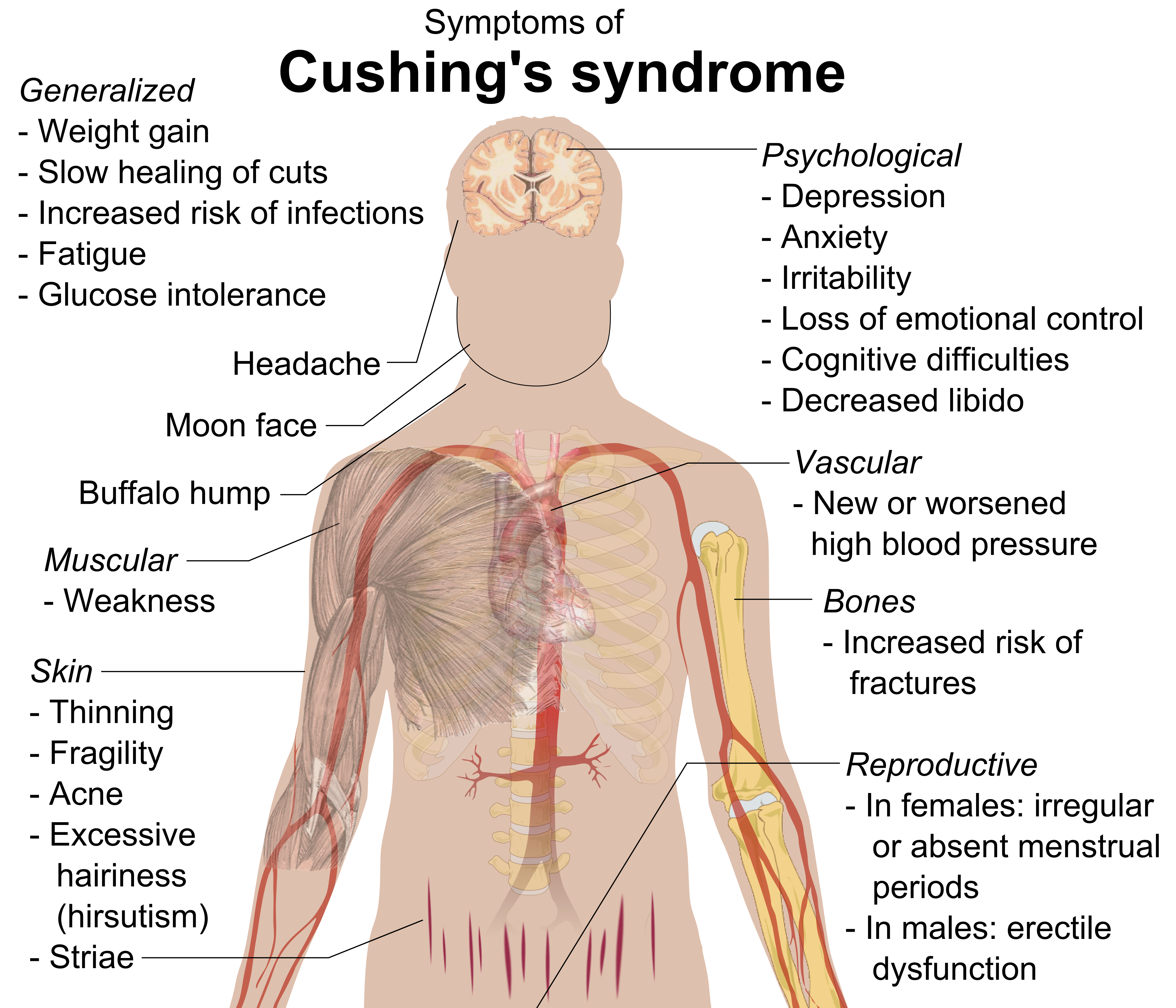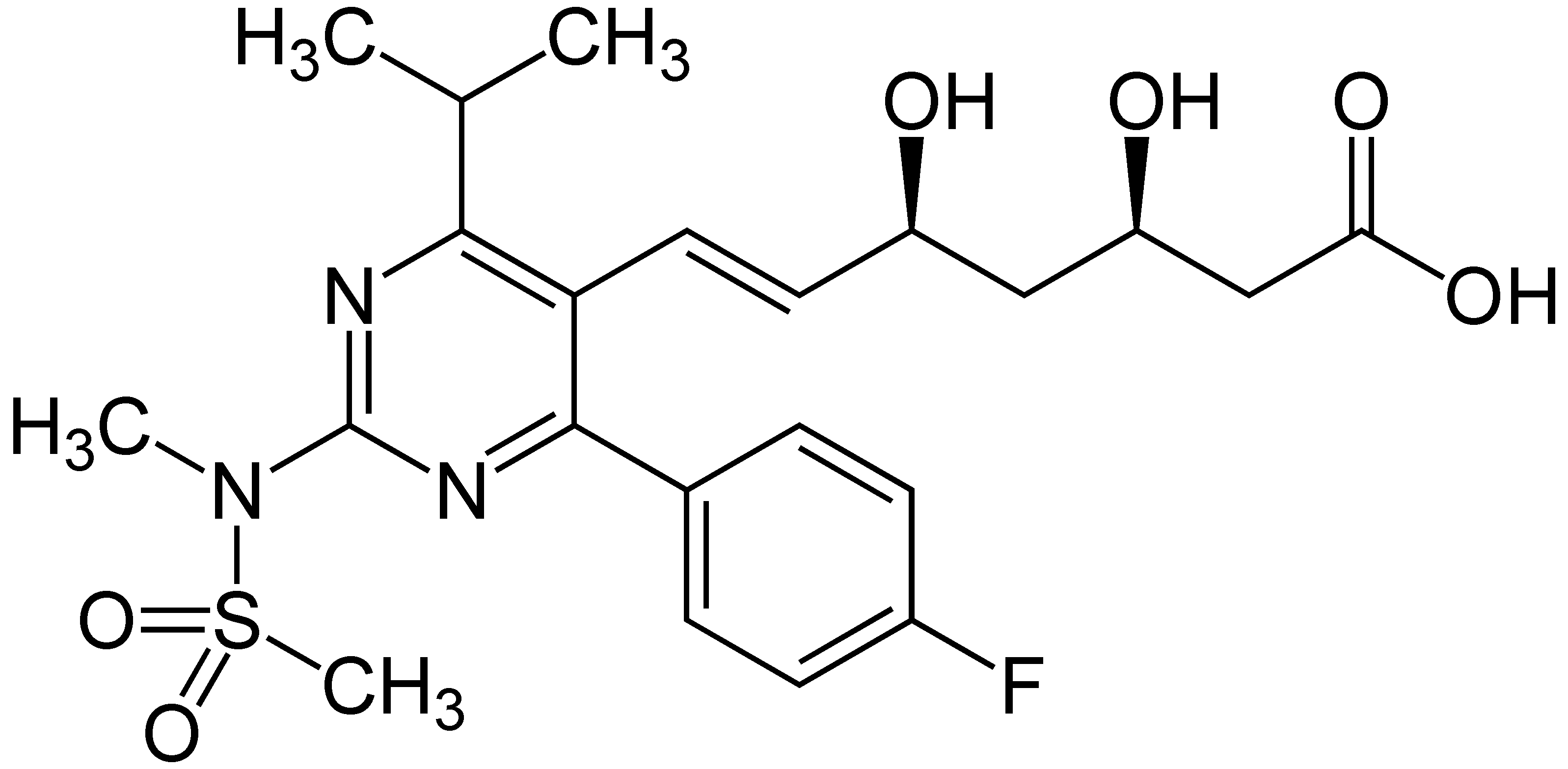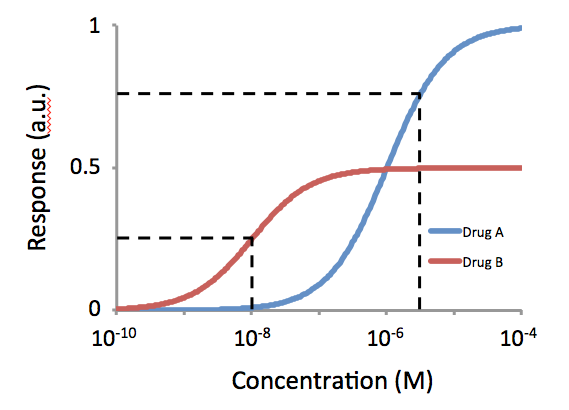|
Osilodrostat
Osilodrostat, sold under the brand name Isturisa, is a medication for the treatment of adults with Cushing's disease who either cannot undergo pituitary gland surgery or have undergone the surgery but still have the disease. It is taken by mouth. The most common side effects are adrenal insufficiency, headache, vomiting, nausea, fatigue, and edema (swelling caused by fluid retention). Hypocortisolism (low cortisol levels), QTc prolongation (a heart rhythm condition) and elevations in adrenal hormone precursors (inactive substance converted into a hormone) and androgens (hormone that regulates male characteristics) may also occur in people taking osilodrostat. Osilodrostat was approved for medical use in the European Union in January 2020, and for medical use in the United States in March 2020. The U.S. Food and Drug Administration (FDA) considers it to be a first-in-class medication. Osilodrostat is an orally active, nonsteroidal corticosteroid biosynthesis inhibitor which ... [...More Info...] [...Related Items...] OR: [Wikipedia] [Google] [Baidu] |
Steroidogenesis Inhibitor
A steroidogenesis inhibitor, also known as a steroid biosynthesis inhibitor, is a type of drug which inhibits one or more of the enzymes that are involved in the process of steroidogenesis, the biosynthesis of endogenous steroids and steroid hormones. They may inhibit the production of cholesterol and other sterols, sex steroids such as androgens, estrogens, and progestogens, corticosteroids such as glucocorticoids and mineralocorticoids, and neurosteroids. They are used in the treatment of a variety of medical conditions that depend on endogenous steroids. Steroidogenesis inhibitors are analogous in effect and use to antigonadotropins (which specifically inhibit gonadal sex steroid production), but work via a different mechanism of action; whereas antigonadotropins suppress gonadal production of sex steroids by effecting negative feedback on and thereby suppressing the hypothalamic–pituitary–gonadal axis, steroidogenesis inhibitors directly inhibit the enzymatic biosynthe ... [...More Info...] [...Related Items...] OR: [Wikipedia] [Google] [Baidu] |
Cushing's Syndrome
Cushing's syndrome is a collection of signs and symptoms due to prolonged exposure to glucocorticoids such as cortisol. Signs and symptoms may include high blood pressure, abdominal obesity but with thin arms and legs, reddish stretch marks, a round red face, a fat lump between the shoulders, weak muscles, weak bones, acne, and fragile skin that heals poorly. Women may have more hair and irregular menstruation. Occasionally there may be changes in mood, headaches, and a chronic feeling of tiredness. Cushing's syndrome is caused by either excessive cortisol-like medication, such as prednisone, or a tumor that either produces or results in the production of excessive cortisol by the adrenal glands. Cases due to a pituitary adenoma are known as Cushing's disease, which is the second most common cause of Cushing's syndrome after medication. A number of other tumors, often referred to as ectopic due to their placement outside the pituitary, may also cause Cushing's. Some ... [...More Info...] [...Related Items...] OR: [Wikipedia] [Google] [Baidu] |
Oral Administration
Oral administration is a route of administration where a substance is taken through the mouth. Per os abbreviated to P.O. is sometimes used as a direction for medication to be taken orally. Many medications are taken orally because they are intended to have a systemic effect, reaching different parts of the body via the bloodstream, for example. Oral administration can be easier and less painful than other routes, such as injection. However, the onset of action is relatively low, and the effectiveness is reduced if it is not absorbed properly in the digestive system, or if it is broken down by digestive enzymes before it can reach the bloodstream. Some medications may cause gastrointestinal side effects, such as nausea or vomiting, when taken orally. Oral administration can also only be applied to conscious patients, and patients willing and able to swallow. Terminology ''Per os'' (; ''P.O.'') is an adverbial phrase meaning literally from Latin "through the mouth" or "by mouth ... [...More Info...] [...Related Items...] OR: [Wikipedia] [Google] [Baidu] |
Levoketoconazole
Levoketoconazole, sold under the brand name Recorlev, is a steroidogenesis inhibitor that is used for the treatment of Cushing's syndrome. Levoketoconazole was approved for medical use in the United States in December 2021. Levoketoconazole is the levorotatory or (2''S'',4''R'') enantiomer of ketoconazole, and it is an inhibitor of the enzymes CYP11B1 (11β-hydroxylase), CYP17A1 (17α-hydroxylase/17,20-lyase), and CYP21A2 (21-hydroxylase). It inhibits glucocorticoid biosynthesis and hence circulating levels of glucocorticoids, thereby treating Cushing's syndrome. In addition to its increased potency, the drug is 12-fold less potent than racemic ketoconazole in inhibiting CYP7A1 (cholesterol 7α-hydroxylase), theoretically resulting in further reduced interference with bile acid production and metabolite elimination and therefore less risk of hepatotoxicity. Levoketoconazole has also been found to inhibit CYP11A1 (cholesterol side-chain cleavage enzyme) and CYP51A1 Lano ... [...More Info...] [...Related Items...] OR: [Wikipedia] [Google] [Baidu] |
Orphan Drug
An orphan drug is a pharmaceutical agent developed to treat medical conditions which, because they are so rare, would not be profitable to produce without government assistance. The conditions are referred to as orphan diseases. The assignment of orphan status to a disease and to drugs developed to treat it is a matter of public policy in many countries and has yielded medical breakthroughs that might not otherwise have been achieved, due to the economics of drug research and development. In the U.S. and the EU, it is easier to gain marketing approval for an orphan drug. There may be other financial incentives, such as an extended period of exclusivity, during which the producer has sole rights to market the drug. All are intended to encourage development of drugs which would otherwise lack sufficient profit motive to attract corporate research budgets and personnel. Definition According to the US Food and Drug Administration (FDA), an orphan drug is defined as one "intended for ... [...More Info...] [...Related Items...] OR: [Wikipedia] [Google] [Baidu] |
Aldosterone Synthase
Aldosterone synthase, also called steroid 18-hydroxylase, corticosterone 18-monooxygenase or P450C18, is a steroid hydroxylase cytochrome P450 enzyme involved in the biosynthesis of the mineralocorticoid aldosterone and other steroids. The enzyme catalyzes sequential hydroxylations of the steroid angular methyl group at C18 after initial 11β-hydroxylation (the enzyme has steroid 18-hydroxylase activity as well as steroid 11 beta-hydroxylase activity). It is encoded by the gene in humans. Aldosterone synthase is a protein which is only expressed in the zona glomerulosa of the adrenal cortex and is primarily regulated by the renin–angiotensin system. It is the sole enzyme capable of synthesizing aldosterone in humans and plays an important role in electrolyte balance and blood pressure. Genetics Aldosterone synthase is encoded on chromosome 8q22 by the ''CYP11B2'' gene. The gene contains 9 exons and spans roughly 7000 base pairs of DNA. ''CYP11B2'' is closely related with ... [...More Info...] [...Related Items...] OR: [Wikipedia] [Google] [Baidu] |
Enzyme Inhibitor
An enzyme inhibitor is a molecule that binds to an enzyme and blocks its activity. Enzymes are proteins that speed up chemical reactions necessary for life, in which substrate molecules are converted into products. An enzyme facilitates a specific chemical reaction by binding the substrate to its active site, a specialized area on the enzyme that accelerates the most difficult step of the reaction. An enzyme inhibitor stops ("inhibits") this process, either by binding to the enzyme's active site (thus preventing the substrate itself from binding) or by binding to another site on the enzyme such that the enzyme's catalysis of the reaction is blocked. Enzyme inhibitors may bind reversibly or irreversibly. Irreversible inhibitors form a chemical bond with the enzyme such that the enzyme is inhibited until the chemical bond is broken. By contrast, reversible inhibitors bind non-covalently and may spontaneously leave the enzyme, allowing the enzyme to resume its function. Rev ... [...More Info...] [...Related Items...] OR: [Wikipedia] [Google] [Baidu] |
Binding Selectivity
Binding selectivity is defined with respect to the binding of ligands to a substrate forming a complex. Binding selectivity describes how a ligand may bind more preferentially to one receptor than another. A selectivity coefficient is the equilibrium constant for the reaction of displacement by one ligand of another ligand in a complex with the substrate. Binding selectivity is of major importance in biochemistry and in chemical separation processes. Selectivity coefficient The concept of selectivity is used to quantify the extent to which one chemical substance, A, binds each of two other chemical substances, B and C. The simplest case is where the complexes formed have 1:1 stoichiometry. Then, the two interactions may be characterized by equilibrium constants ''K''AB and ''K''AC.The constant used here are ''association'' constants. ''Dissociation'' constants are used in some contexts. A dissociation constant is the reciprocal of an association constant. : + B AB; \mathit ... [...More Info...] [...Related Items...] OR: [Wikipedia] [Google] [Baidu] |
Potency (pharmacology)
In the field of pharmacology Pharmacology is a branch of medicine, biology and pharmaceutical sciences concerned with drug or medication action, where a drug may be defined as any artificial, natural, or endogenous (from within the body) molecule which exerts a biochemi ..., potency is a measure of drug activity expressed in terms of the amount required to produce an effect of given intensity. A highly potent drug (e.g., fentanyl, alprazolam, risperidone, bumetanide, bisoprolol) evokes a given response at low concentrations, while a drug of lower potency ( meperidine, diazepam, ziprasidone, furosemide, metoprolol) evokes the same response only at higher concentrations. Higher potency does not necessarily mean greater effectiveness or more side effects. The IUPHAR has stated that 'potency' is ''"an imprecise term that should always be further defined"'', for instance as EC_, IC_, ED_, LD_ and so on. See also * Reaction inhibitor § Potency References F ... [...More Info...] [...Related Items...] OR: [Wikipedia] [Google] [Baidu] |
Pituitary ACTH Hypersecretion
Pituitary ACTH hypersecretion (or Cushing disease) is a form of hyperpituitarism characterized by an abnormally high level of ACTH produced by the anterior pituitary. It is one of the causes of Cushing's syndrome Cushing's syndrome is a collection of signs and symptoms due to prolonged exposure to glucocorticoids such as cortisol. Signs and symptoms may include high blood pressure, abdominal obesity but with thin arms and legs, reddish stretch marks .... (However, Cushing's syndrome can be caused by many other causes, including exogenous administration.) References External links Pituitary disorders {{endocrine-disease-stub ... [...More Info...] [...Related Items...] OR: [Wikipedia] [Google] [Baidu] |




